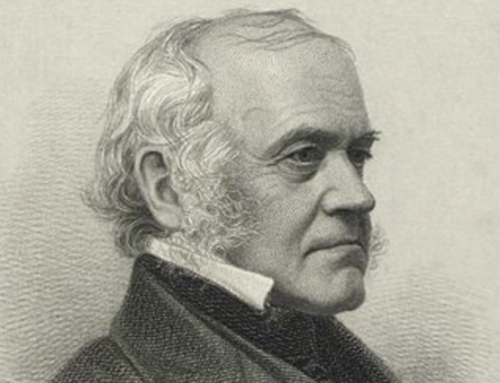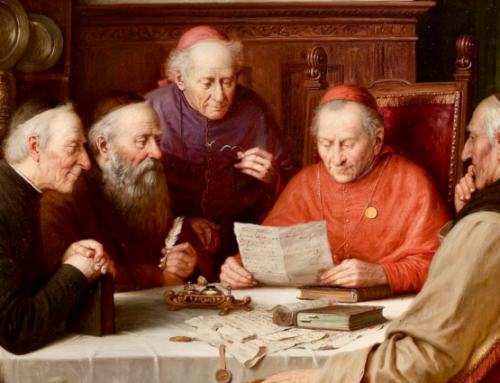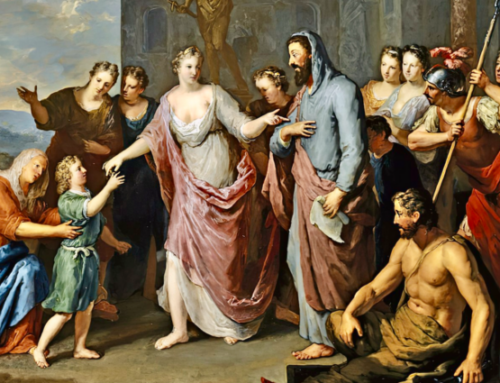Yes, the stable was real and the animals were real, but what were they really and how did they find their way into the Christmas story?
 What’s not to like about the Christmas story? A long journey, a quaint village, a pregnant mom and a worried dad, a grumpy innkeeper on a dark and stormy night, a murderous king, a young couple in crisis, homely rustics and singing angels, mystical wizards following a magical star, a newborn baby… and animals.
What’s not to like about the Christmas story? A long journey, a quaint village, a pregnant mom and a worried dad, a grumpy innkeeper on a dark and stormy night, a murderous king, a young couple in crisis, homely rustics and singing angels, mystical wizards following a magical star, a newborn baby… and animals.
A dozy donkey and a humble ox, elegant camels in royal livery, cuddly lambs and dumb sheep. The story has everything needed to sweeten the mind and warm the heart.
Readers of my two books on the characters of Christmas will realize that I have tried to cut through the tinsel, trimmings and traditions to discover what the nativity of the Lord was really like.
This effort is not to be a scrooge, a grump or a grinch, but to ground our Christmas celebrations in the grittiness of the incarnation in order to remind ourselves that this was no sentimental fairy tale, no cute fable or fantasy with a lovely lesson. It was not a fabrication by the early Christians to make Jesus more special. Instead it was a particular child born to a particular mother in a particular stable in a particular Judean village on a particular date and time in human history.
Yes, the stable was real and the animals were real, but what were they really and how did they find their way into the Christmas story? First we must realize that the story of Christ’s nativity as it is popularly re-told is a conflation of two very different stories. St Luke tells us about Mary, the angel, the shepherds, Bethlehem, Jerusalem and Nazareth. St Matthew tells us more about St Joseph, Bethlehem, the magi, Herod, and the flight into Egypt. The stories related by Matthew and Luke are suitably spare and understated. They have been embellished and decorated in the intervening centuries.
And the animals? In fact neither Luke nor Matthew tell us about animals at all. The various creatures crept into the Bethlehem stable as the centuries unfolded and the nativity story accumulated accretions, traditions, elaborations and lessons.
Let us begin with the donkey. We tell the story of the Blessed Virgin riding a donkey from Nazareth to Bethlehem. It is very likely that she did since we know from historical records that donkeys were a primary means of transportation among the poor.
Some scholars of Egyptian papyri have even discovered commercial records telling us how much one would pay to rent a donkey for a journey. So it is very likely that a heavily pregnant woman would ride a donkey for a ninety-mile journey, but Luke doesn’t tell us this. The detail comes into the story from the Prooevangelium of James—the early-second century document that re-tells the nativity story and gives us the background of Mary’s birth, childhood, and betrothal to St Joseph.
So from the early-second century the donkey makes his way into the cast of the nativity play. What about the ox? The pair of them first enter the story in the eighth century as a commentary on Isaiah 1:3, “The ox knows its owner, and the donkey its master’s crib, but Israel does not know, my people do not understand.” Ah hah!” said the preacher. “This is clearly a prophecy of the manger bed and the stable of Bethlehem!”
It is certainly probable that both a donkey and an ox would inhabit a homestead stable in Bethlehem, because in Luke 14:5 Jesus speaks about ordinary life featuring an ox and an ass: “Which of you shall have an ass or an ox fallen into a pit, and will not straightway pull him out on the sabbath day?”
While St Luke does not mention the ox and ass, neither does he discuss the sheep. We know there were sheep involved because there were shepherds “keeping watch over their flocks by night.” But what sort of shepherds were they and what sort of sheep did they tend?
There is a charming tradition in circulation on the internet that the Bethlehem shepherds were priestly shepherds and that they were breeding the thousands of lambs required for the sacrificial worship in the temple in Jerusalem just six miles away. This lovely legend explains that when a lamb was born which was destined to be sacrificed at Passover it would have to be examined by the priests to ensure that it met the strict requirements of temple worship. To keep it safe, so the story goes, the shepherds would wrap the newborn lamb in strips of cloth and lay it in a feeding trough until the priest could come to inspect it.
Therefore, when the angels said to the shepherds, “This shall be a sign unto you. You shall find the babe wrapped in swaddling clothes and lying in a manger,” the shepherds knew the baby they were going to see was the Lamb of God—the one who would one day be sacrificed on Passover.
It is a lovely story, and I wish it were true. In fact, knowing this story provided the main motivation for my two-month sabbatical in Jerusalem. I could not find evidence for this story in my library based research so I went to Jerusalem and Bethlehem to see what I could find. Alas, I found no evidence for the charming story. I searched the famous Biblical libraries, spoke to present day Bethlehem shepherds, interviewed scholars from the Hebrew University, and drew a blank.
The only clue was an obscure reference in the Mishnah that the animals in the area between Jerusalem and Bethlehem were to be dedicated to the temple worship—but even this hint is believed by some scholars to be referring to stray animals—not the existence of a large factory farm in the Judean hills.
It is possible, however, that the sheep of Bethlehem were destined for the temple sacrifices. Josephus records that at Passover over 260,000 lambs were sacrificed. Josephus is notorious for exaggerated or symbolic numbers, but even so thousands of animals must have been slaughtered, and they had to come from somewhere. The Bethlehem area—always a rich resource for shepherds—would not be an improbable location for such an agricultural enterprise.
One other detail about those Bethlehem sheep: Do you remember the old grumble that Jesus could not possibly have been born in December because shepherds are only out in the fields with the sheep all night during the lambing season, and lambing is in the spring—not the winter? It’s true that lambing takes place in the spring in Europe, but the breed of sheep common to the Middle East from time immemorial is the Awassi breed—and they give birth between November and January.
Finally, what about the wise men and their camels? Matthew never mentions camels. They enter the story from Isaiah 60:6 —the famous prophecy of the Magi.
“Herds of camels will cover your land,
young camels of Midian and Ephah.
And all from Sheba will come,
bearing gold and incense
and proclaiming the praise of the Lord.
Midian and Ephah are in Western Arabia and Sheba is in present day Somalia—Northeast Africa. At the time of Christ’s nativity this territory was occupied by the fabulously wealthy trading nation —the Nabateans. If the premise of my book The Mystery of the Magi is correct, then the wise men were sophisticated astrologer priests from the court of King Aretas IV of Nabatea.
As such they would most certainly have ridden the comparatively short distance from their capital Petra to Jerusalem on the Arabian horses they were famous for breeding. The Magi probably used dromedaries as pack animals, but I suspect when they arrived in Bethlehem they added another animal to the menagerie of Bethlehem—their fleet and beautiful Arabian horses.
Fr. Dwight Longenecker is the author of The Mystery of the Magi and The Secret of the Bethlehem Shepherds.
The Imaginative Conservative applies the principle of appreciation to the discussion of culture and politics—we approach dialogue with magnanimity rather than with mere civility. Will you help us remain a refreshing oasis in the increasingly contentious arena of modern discourse? Please consider donating now.
The featured image is “Nativity” (1525) by Bernardino Luini, and is in the public domain, courtesy of Wikimedia Commons.







CONGRATULATIONS ON YOUR ACHIEVEMENT FOR PUBLISHING.
I WISH YOU A HAPPY CHRISTMAS AND A BETTER NEW YEAR.
If we re-fit our nativities with Arabian steeds and removed the camels, or perhaps leave them in but as pack animals not be-decked with any royal trimmings, possibly with packs of supplies hung upon them, would that give us a meaningfully clearer understanding of the grittiness of being “born in a barn”? Does the suggestion that the narrative is a conflation of two different Gospel accounts have any significance? By what is the assertion that the oxen are in the manger because of a verse in Isaiah supported?
The problem with re-enactments 2000 years after the fact is they are generally unverifiable it seems to me. And, if they are just innocent musings or do in fact prove that something in the tradition is wrong then fine and dandy, but if all they do is undermine faith by insinuating that we’ve got it all wrong, then there is a sinister aspect to them. After all, it is not a stretch to believe that there were oxen in a stable. It’s very likely and really makes no difference either way, but when you cast doubt upon one aspect of tradition it does have the effect of casting doubt on the whole.
No one is suggesting that we abandon the added traditions–only that we recognize them as such. We prefer our Christmas tree to be decorated, but we recognize the first beauty and simplicity of the bare conifer.
The ox entering the story from the Isaiah prophecy is first recorded in an 8th century sermon. I mentioned the high probability of there being an ox and ass in the stable in paragraph 10 of the article. The aim of my writing about the nativity of our Lord is not to undermine the historicity and truth, but the emphasize the historicity by helping readers to distinguish the legendary accretions to the story from what we can actually determine by resorting to the earliest records (the gospels of Matthew and Luke) and the archeological, textual and forensic evidence about life in New Testament times. It is important to distinguish the traditions–many which are late and spurious from the history.
Father Longenecker, thank you for doing this research fleshing out and correcting our understanding of the Nativity story. Understanding Jesus as a real human being, who was from a particular ethnic group and who lived in a particular place and time in history (just as we all are and do) helps to bolster my faith.
Yesterday at Mass I gazed at a statue of baby Jesus that sat in front of the altar. This statue depicted the Babe as a very pale infant, with softly curling light brown hair. I imagine that if I had been able to get closer to the statue to examine it, it may well have had blue eyes. In the United States two of our largest Catholic immigrant groups are the Germans and the Irish, and this statue could have depicted any baby boy in a German or Irish household. It is natural that we should like to think of Jesus as one of “us,” and perhaps that is one way that God lets us think of His Son—after all, didn’t Mary appear to St. Juan Diego as an Aztec princess?
We don’t often think about this, but initially converting the Celtic and Germanic tribes in Europe was a difficult and dangerous task. I imagine that making Jesus seem more Northern European made Him more relatable to these fierce warriors. Later, when St. Francis was creating Nativity scenes as a way of re-evangelizing his fellow Catholics, I doubt he was doing much research about what life was like as a first century Judean. He simply fleshed out the Gospel account with what was familiar to him at his time.
Jesus was really and actually a Jew, who lived and worked and taught in the Middle East in the first century, yet much of our artwork depicts him as living in Europe in the late Middle Ages. I’m not saying that we should ditch this artwork—far from it!—nor Christmas trees nor even Magi riding camels. Yet understanding what was real, and what was just added to the story as time went on, serves to ground the man Jesus in our reality, and illuminates God’s plan for us. After all, God did not just accidentally intervene in history in the time of the Roman Emperor Augustus, He chose this time, this place, this people as the time and place in which He wanted His Son to be born. The more we know about it, the better we can meditate on God’s ways and His action in our own lives.
Thank you again, Fr. Longenecker.